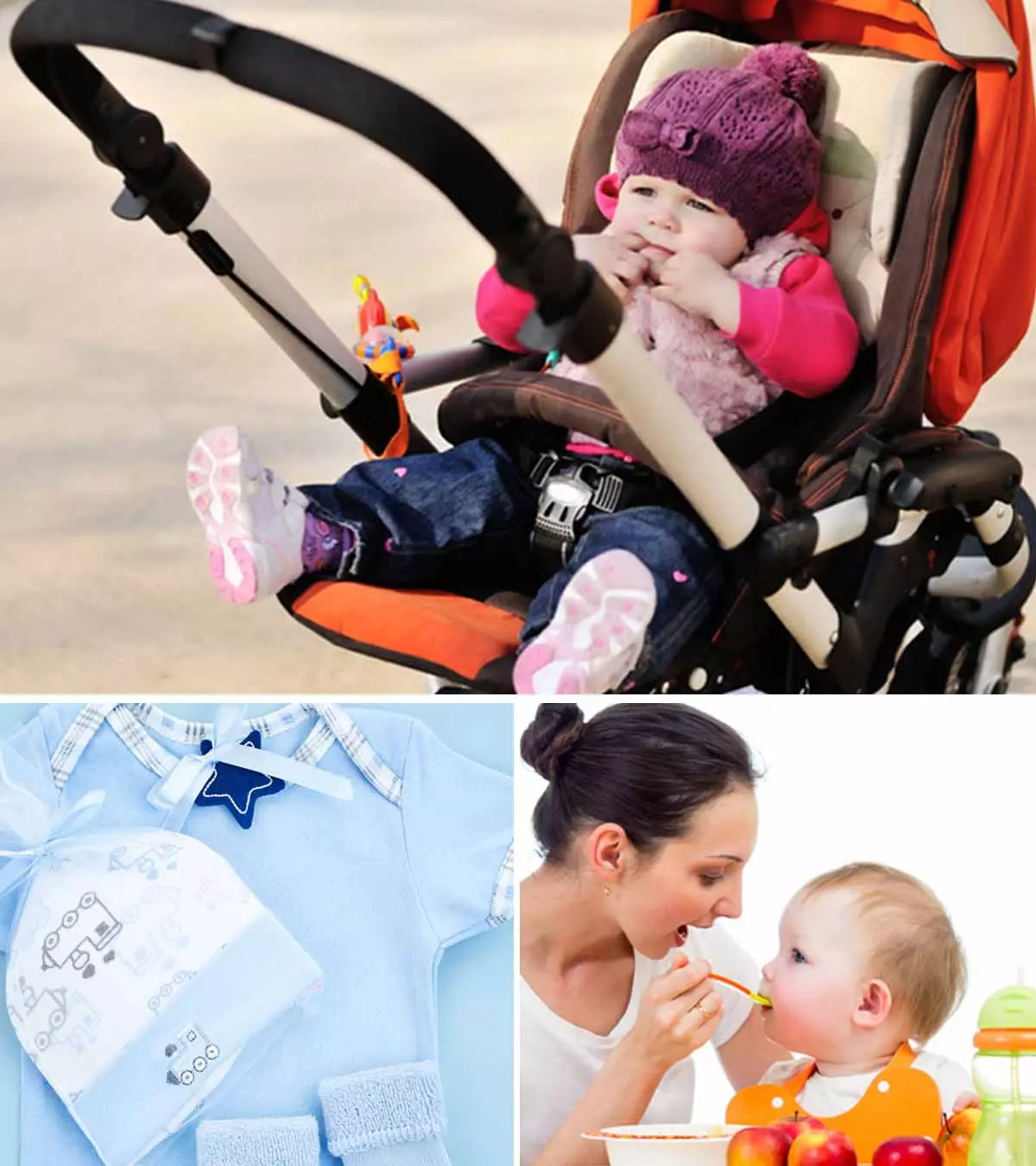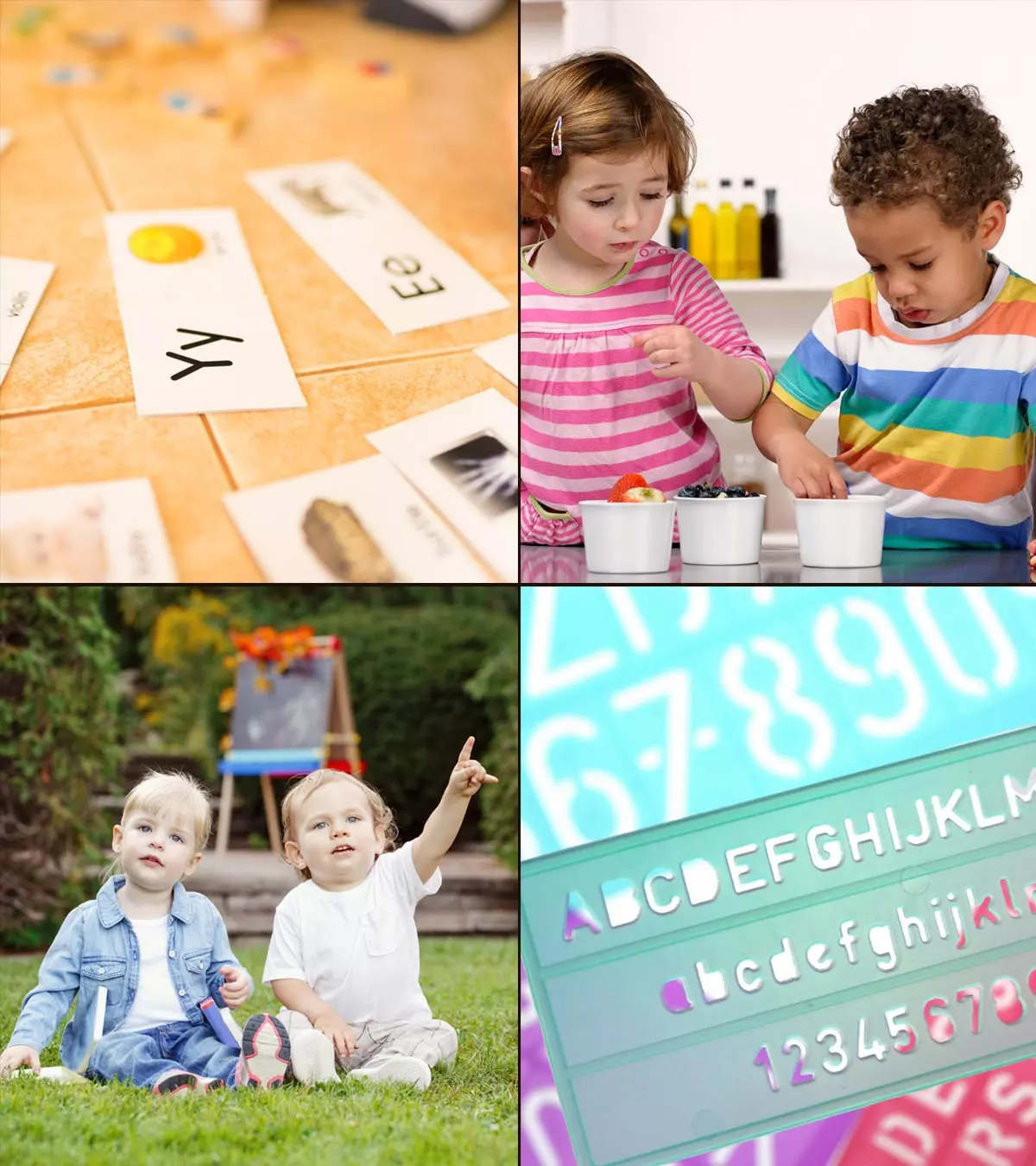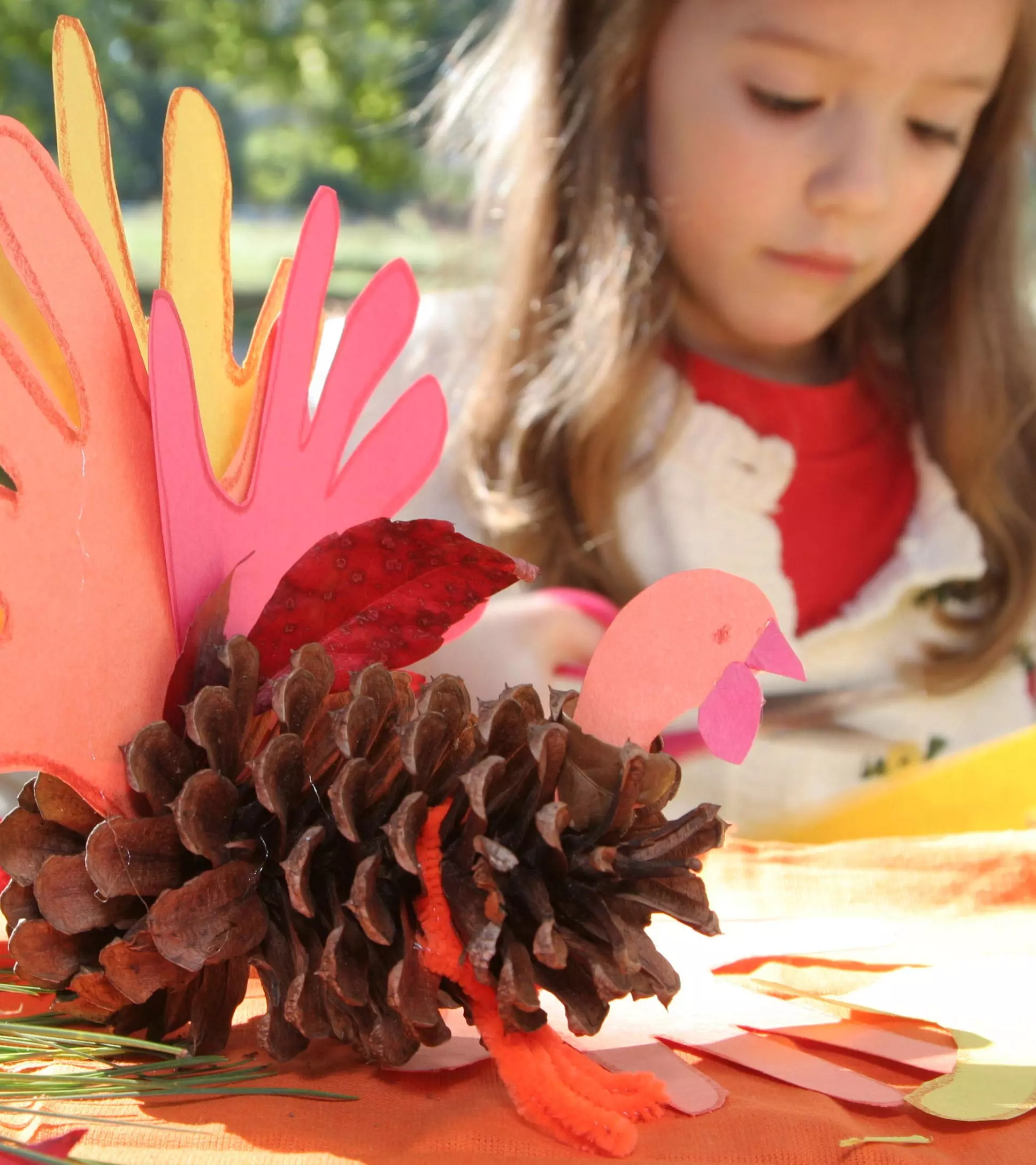

Image: Shutterstock
Strep throat in toddlers is a preventable bacterial infection that causes the development of red, painful pus pockets on the tonsils. These pockets cause the tonsils to inflame and swell, which causes intense pain whenever the toddler swallows. Due to this, they may lose interest in food and behave irritable and fussy. Thus, prompt diagnosis and treatment of this contagious infection are crucial to prevent it from turning severe. Keep reading as we give you more information about the causes of strep throat, its symptoms, diagnosis, treatment, and effective home remedies that can alleviate its symptoms.

What Causes Strep Throat In Toddlers?
Strep throat infection is medically known as streptococcal pharyngitis, and the condition is a bacterial throat infection caused by group A Streptococcus bacteria, also called strep bacteria. The bacteria primarily affects pharynx, which is part of the throat that lies right behind the mouth, at the rear of the tongue. Infection affects tonsils, which is part of the pharynx, and lymph nodes of the throat. The infection spreads in many ways.
How Do Toddlers Catch The Strep Bacteria?
Strep throat is highly contagious, and the bacteria can transmit even through contact with contaminated surfaces. Here is how a toddler can get the infection:
- Through infected person’s cough or sneeze: When someone with strep throat sneezes or coughs, tiny droplets of mucus and saliva spread into the air. If a toddler happens to be around and inhales these droplets, then he catches the infection.
- Sharing personal items with an infected person: If sneeze or cough droplets settle on an object, then it becomes contaminated. Strep bacteria can stay dormant on hard surfaces, and when a toddler touches them and then puts hands in the mouth, nose, or eyes, he catches the infection. Eating from the same plate is often a common thing at daycare centers, and this increases the risk of contracting strep throat.
- Physical contact with an infected person: When the toddler is cuddled and kissed by an infected person, the baby would get infected too.
The above scenarios are quite common in the life of an average preschooler. This is how the coronavirus (CoVid-19) also spreads, only faster.
What Are The Symptoms Of Strep Throat In Toddlers?
The symptoms emerge within three days of contracting the infection on an average. Look for the following sig
ns of strep throat if you suspect the toddler has caught the infection:
- Redness at the back of the throat: The toddler’s throat appears red with tender red spots scattered around the top of the mouth that is the palate.
- Swollen tonsils: Tonsils are inflamed and red. The swelling causes a visible constriction of the throat.
- White spots on tonsils: These spots would be visible on and around the tonsils. They can be pockets of pus, which is itself an accumulation of white blood cells that attack the pathogen.
- Sore throat: Swelling and pain in the throat eventually cause a sore throat.
- Pain during swallowing: The toddler will complain of sharp pain in the neck every time he swallows. Painful swallowing will lead to a decreased interest in food.
- Fever: The toddler will have fever with a temperature of over 100.4°F (38°C) (1).
- Headache, body aches, and stomach pain: The infection leads to body.
- Nausea and vomiting: There is a constant feeling of nausea, along with vomiting.
- Scarlet fever: A condition that occurs collaterally as a result of severe strep infection, scarlet fever causes rough, sandpaper-like rashes all over the body. Toddlers will also show a red coloration of cheeks almost appearing as a blush. The tongue develops red blisters mostly around the tip, and is referred to as strawberry tongue.
Remember, hoarse voice, cough, redness of eyes, and runny nose are NOT the symptoms of strep throat and could be indicators of a viral infection. Take your baby to a doctor even at the slightest sign of the condition to prevent an aggravation of the infection. Moreover, all these symptoms may not be present together, even in strep infection.
How Is Strep Throat In Toddlers Diagnosed?
The doctor makes a diagnosis through a combination of the following steps:
- Physical examination: Doctors check for symptoms of strep throat such as enlarged tonsils, white spots, and the presence of the scarlet fever rash.
- Strep antigen test: A doctor rubs the tip of a swab at the back of the throat and then tests the swabbed mucus for the presence of strep antigen. This test is quick and detects strep bacteria within minutes.
- Throat culture: For better results, a throat culture is done at the same time as the antigen test is sent, especially before any antibiotic is started. Mucus from the tonsils is collected on a swab and transferred to a laboratory petri dish where it is cultured. If strep bacteria develop, then a strep infection is confirmed. Throat culture test is accurate, but results can take up to two to five days, which is why the antigen test is also sent concomitantly, so that the diagnosis can be provisionally made sooner.
If the diagnosis is not confirmed in time, and medication not started, strep throat can lead to complications, some of which are quite bad.
What Are The Complications Of Strep Throat In Toddlers?
When left untreated, strep throat infection can cause:
- Rheumatic fever: This leads to the inflammation of the joints, damage to the nervous system, and the valves of the heart.
- Kidney inflammation: The disease is called post-streptococcal glomerulonephritis. Here the kidney swells and blood vessels in it are damaged leading to blood in the urine.
- Nervous system disorder: Strep infection may cause pediatric autoimmune neuropsychiatric disorder associated with group A Streptococci, known by its short form PANDAS. It leads to psychiatric disorders such as obsessive-compulsive disorder and tic disorder (random involuntary twitching and contraction of muscles) (2).
These complications cause permanent damage to the body. Therefore, strep throat should be treated immediately.
How Is Strep Throat Treated In Toddlers?
Since strep throat infection is caused by bacteria, it can be tackled through antibiotics. In fact, antibiotic course is the only mode of treatment for strep throat in toddlers. These medicines are prescribed for ten days. The toddler will feel better within 24 hours of commencing treatment, and by the third day, most symptoms would be gone. However, the entire course of treatment should be completed to rid the body of the strep bacteria. A full course not only helps to stop resistant strains, it also helps reduce the incidences of complications, especially the bad ones.
The doctor will also prescribe fever and pain relievers such as paracetamol and acetaminophen. Both medicines should be administered to toddlers only in the liquid form (3) (4). Ibuprofen can be given, where fever is not controlled with the above medicines, but best avoided due to bad side-effects. The precise dosage depends on the intensity of the condition and should be given only after doctor consultation. While medicines deal with the bacteria, there are a few natural home remedies to help the toddler feel better.
What Are Some Home Remedies For Strep Throat?
Here are some ways to deal withstrep throat infection at home.
- Keep the toddler hydrated: Water helps relieve the irritation and lubricates the tonsils. Give the little one regular sips of water to keep the throat hydrated. Remember not to distress the toddler by giving too much at a time, since drinking may be painful for the toddler.
- Give sips of warm water: Heat the water until it is comfortably warm to swallow. Give the toddler small sips of the water of about 5-15ml at least four times a day. It is a safe home remedy recommended by pediatricians to subdue a sore throat in toddlers (5). In the Western world, popsicles are often utilized.
- Prefer liquid food: Strep throat can affect a toddler’s diet by making swallowing painful. Provide optimum nutrition through liquid foods such as vegetable broth, diluted chicken soup, milk, and diluted porridges. You can also give bits of scrambled egg since it is easy to swallow. Avoid giving fruit juices as they contain little nutrition (6). Instead, make diluted fresh fruit purees right at home.
Do not give the baby citrus fruits as they are acidic; and avoid spices as they might irritate the throat. Rest is always essential to help the body feel better.
How To Prevent Strep Throat In Toddlers?
Maintaining proper hygiene lies at the core of strep throat prevention. In addition to that, here is what you can do:
- Cleanliness of surrounding and personal items: Keep the toddler’s personal items and surroundings clean. Strep bacteria can stay dormant on surfaces such as toys or even a doorknob. Hygiene is crucial to prevent transmission through inanimate contaminated surfaces.
- Teach the importance of washing hands: Teach your toddler to wash hands properly before eating and after coming from outside. It helps rinse away the bacteria from the hands. Experts state that hand-washing is the single most effective preventive measure against strep throat. (7).
- Stay away from those with a sore throat: It is best for the toddler to maintain distance from those with a sore throat since it could be a strep throat.
- Cover the nose and mouth while sneezing: Every time you sneeze or cough, cover your mouth. Teach your toddler and his siblings to do the same. It is more than a good habit. Strep bacteria can lie dormant in the nose and the mouth. While it may not harm adults, the bacteria can quickly multiply in toddlers to cause strep throat.
- Do not share personal items with toddler: All it takes is a tiny amount of saliva to transmit the strep bacteria. Therefore, do not share drinking glasses and eating plates with the toddler as he could contract the bacteria.
It may be difficult to see your child struggling with nausea and painful and sore throat. Although the symptoms of strep throat in toddlers may be quite uncomfortable, the condition can be managed with prompt treatment and diagnosis. As long as the course of antibiotics is completed, there is nothing to worry about. You may try to prevent strep throat in toddlers by following simple hygiene tips and being mindful of the surroundings to avoid contact with an infected person or object.
References
- Signs and Symptoms of Fever.
https://www.healthychildren.org/English/health-issues/conditions/fever/Pages/Signs-and-Symptoms-of-Fever.aspx - PANDAS-Questions and Answers.
https://www.nimh.nih.gov/health/publications/pandas - Ibuprofen Dosing Table for Fever and Pain.
https://www.healthychildren.org/English/safety-prevention/at-home/medication-safety/Pages/Ibuprofen-for-Fever-and-Pain.aspx - Acetaminophen Dosing Tables for Fever and Pain in Children.
https://www.healthychildren.org/English/safety-prevention/at-home/medication-safety/Pages/Acetaminophen-for-Fever-and-Pain.aspx - Coughs and Colds: Medicines or Home Remedies?
https://www.healthychildren.org/English/health-issues/conditions/chest-lungs/Pages/Coughs-and-Colds-Medicines-or-Home-Remedies.aspx - Where We Stand: Fruit Juice.
https://www.healthychildren.org/English/healthy-living/nutrition/Pages/Where-We-Stand-Fruit-Juice.aspx - Strep Throat Infection.
https://www.healthychildren.org/English/tips-tools/symptom-checker/Pages/symptomviewer.aspx?symptom=Strep+Throat+Infection
Community Experiences
Join the conversation and become a part of our nurturing community! Share your stories, experiences, and insights to connect with fellow parents.
Read full bio of Dr. Anjan Bhattacharya
Read full bio of Rohit Garoo














